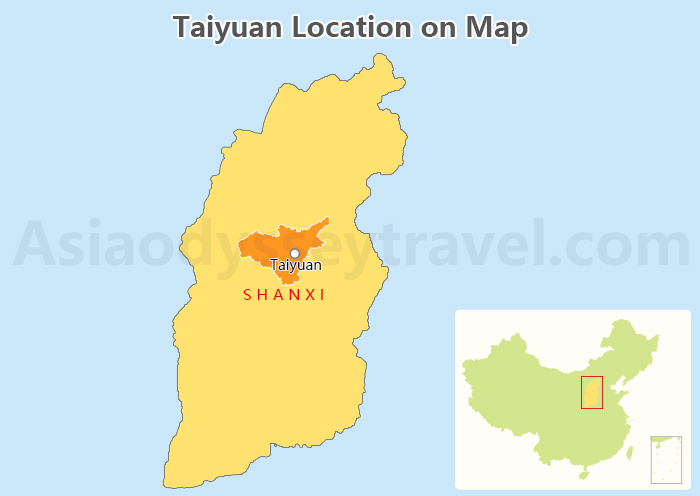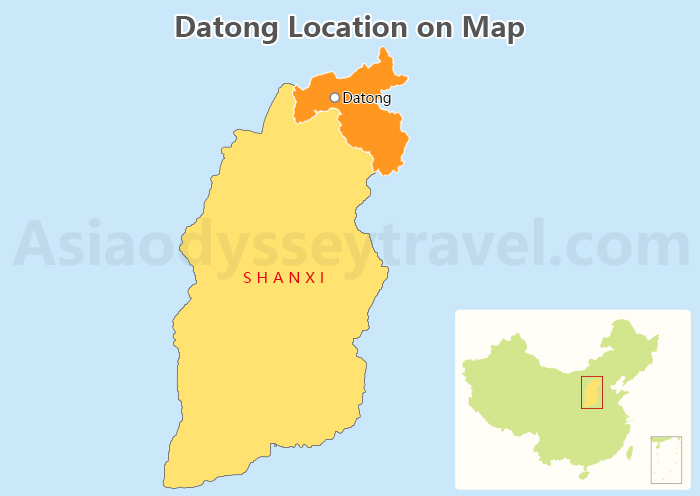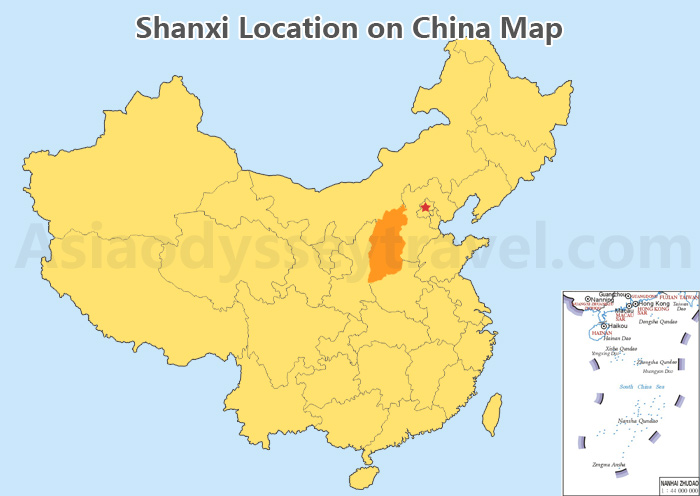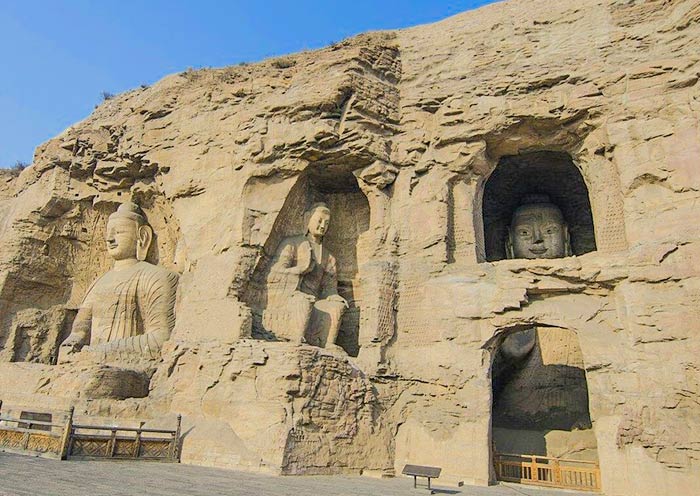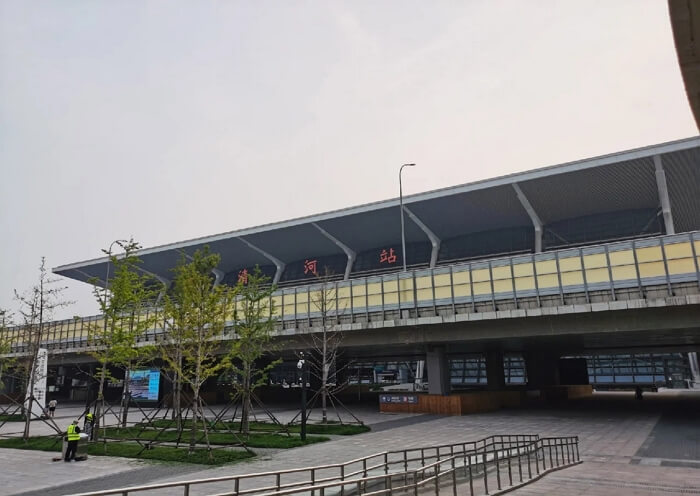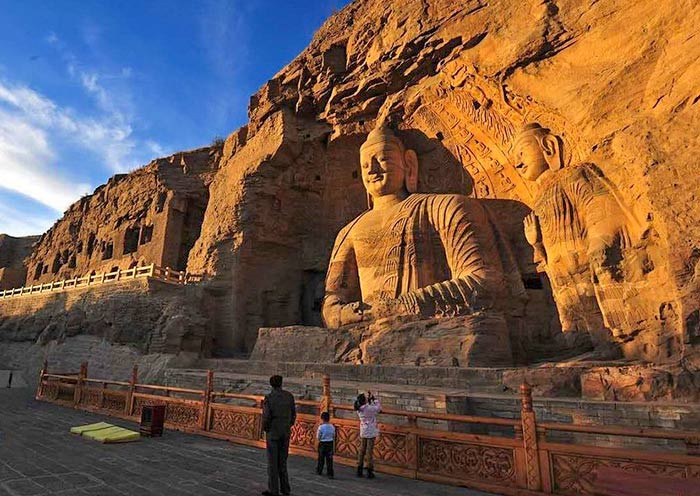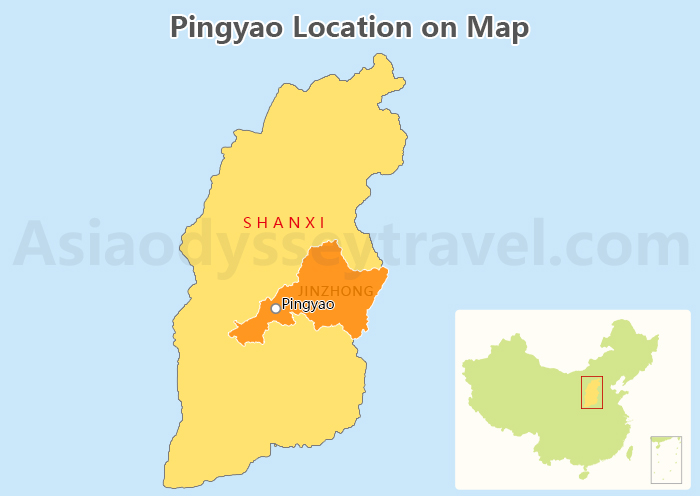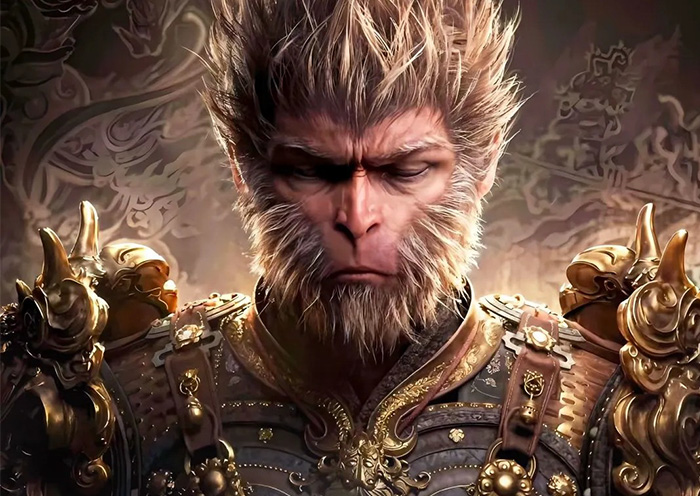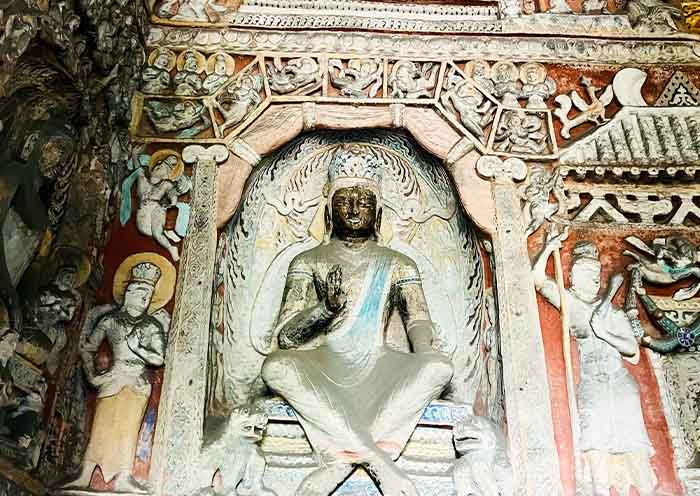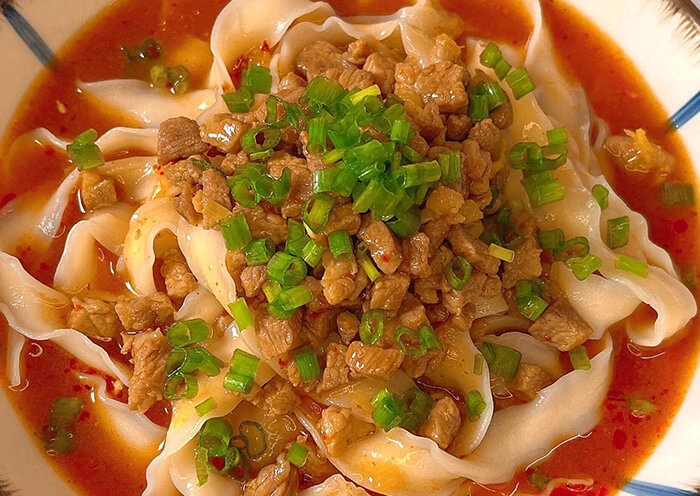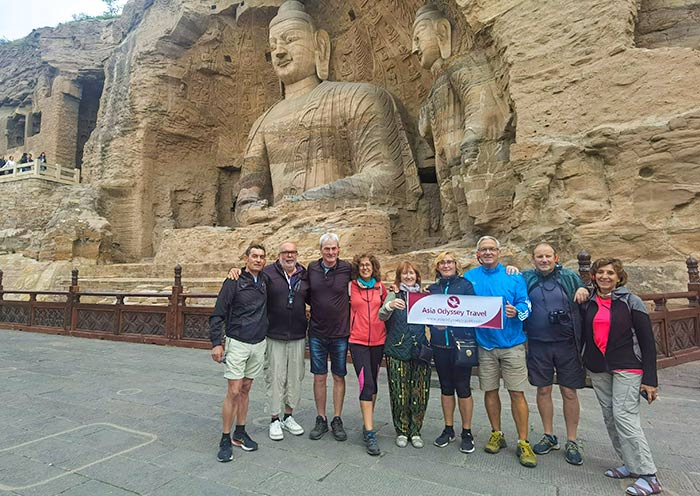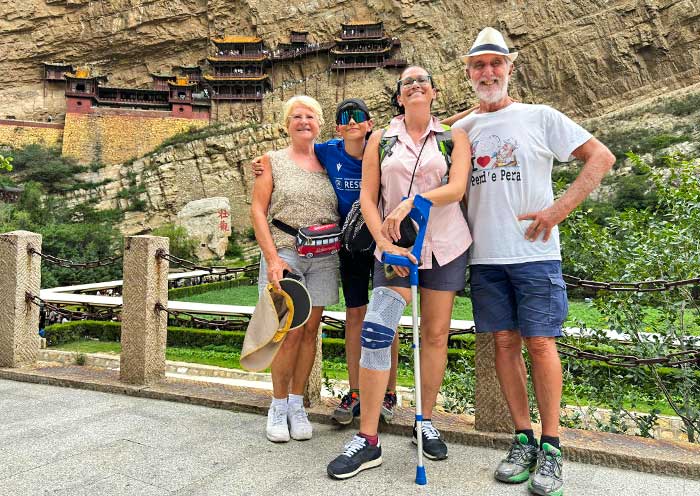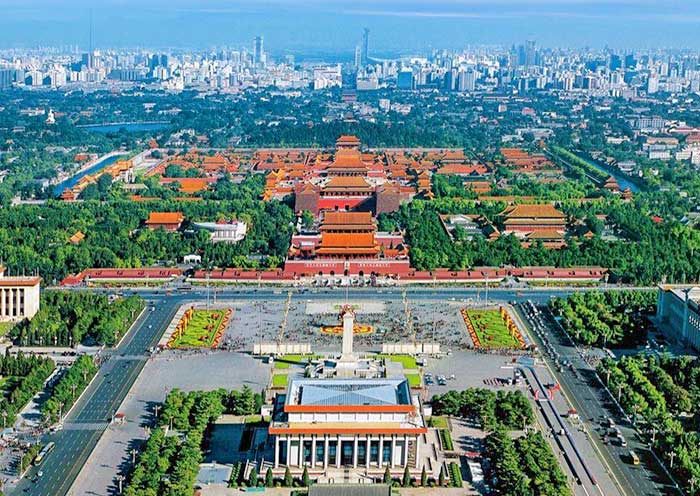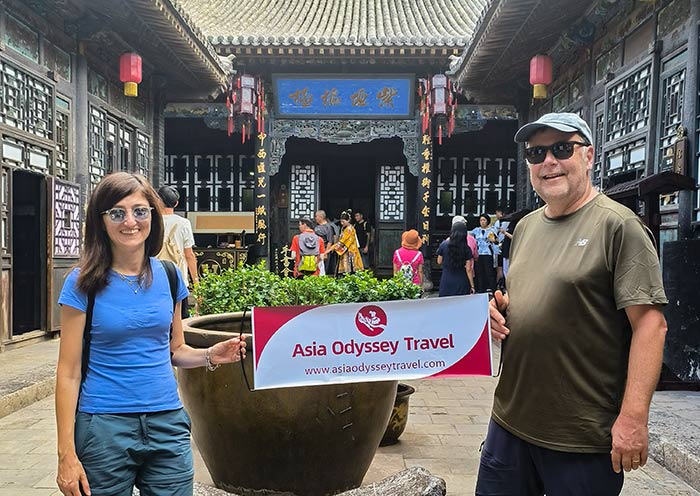Yungang Caves Facts
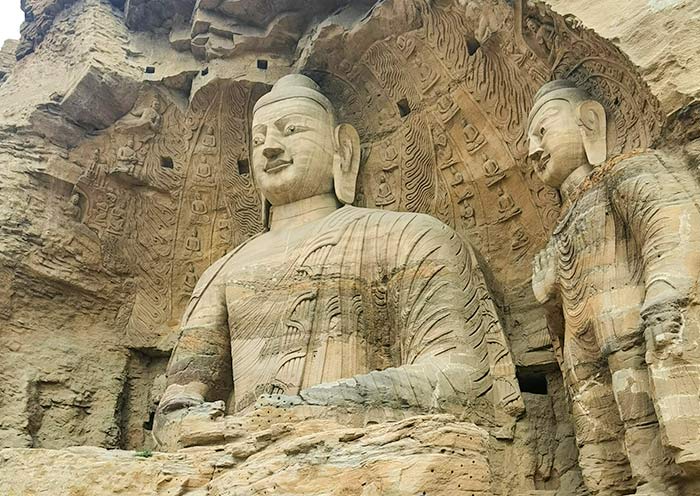
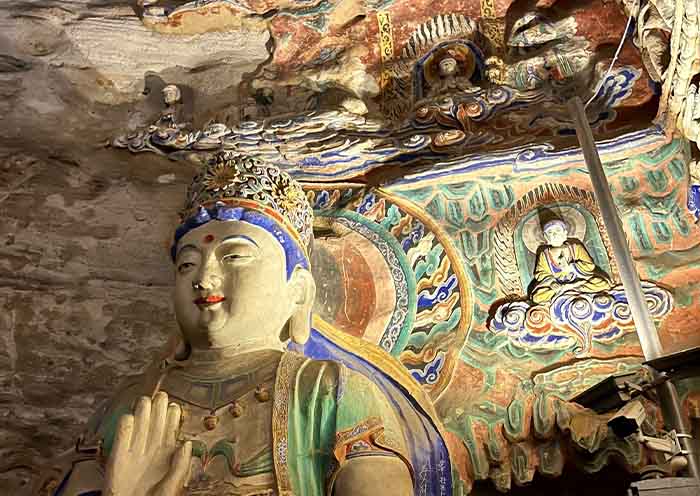
Location: No. 1, Yungang Town, Yungang District, Datong City, Shanxi Province, China
Opening Hours:
9:00 AM - 5:00 PM (April 1st - June 16th)
8:00 AM - 6:00 PM (June 17th - September 30th)
Best Time to Visit: May to October
Ticket Price:
Peak Season: 120 yuan per adult (April 1st - October 31st)
Off-peak Season: 100 yuan per adult (November 1st - March 31st)
Buy Tickets in Advance or at the Place: In advance.
Duration: Half Day
Making of Yungang Grottoes, Yungang Cave's Three Period
Who Built Yungang Caves?
Walking around the caves, the lines and paintings of the Buddha statues convey the difficulty of constructing the caves. Unlike the Dunhuang Mogao Caves, which were built by folk groups, the Yungang Grottoes were authorized by the Northern Wei royal family in 460 AD and took 65 years to complete. So who participated in the construction? The Yungang Grottoes were supervised by the monk Tan Yao during the Northern Wei period. He excavated the famous "Tan Yao Five Caves" (Caves 16-20), which are among the largest and most artistically significant caves in the Yungang Grottoes. Monks and craftsmen from various regions participated in the construction of the Yungang Grottoes, as well as some foreign monk groups.
Why Built Yungang Grottoes?
As tourists wander through the caves, they may wonder - why build such large-scale grottoes? Most of the world's amazing ancient sites are inseparable from the political ambitions of the dynasties behind them. Just like the Roman Colosseum, which showcased the cultural influence of the Roman Empire, the Yungang Grottoes were carved by the Northern Wei Dynasty to demonstrate the nation's power and cultural achievements.
Explore Early, Middle, and Late Periods of Yungang Caves
While there are 45 caves to explore at Yungang Grottoes, the experience is far from monotonous. The evolving styles of the Buddha statues are evident, allowing visitors to trace the artistic journey from the early to the late periods.
The Early Yungang Grottoes (Caves 16-20):
Caves 16-20 are the earliest of the Yungang Grottoes, dating back to between 460 and 494 AD. These large caves are home to some of the most impressive early Buddha statues. Notice the statues' strong, muscular forms and the smooth flow of their lines, influenced by Greco-Buddhist art. In contrast to the grandeur of the Buddha statues, the other decorations in the caves are quite simple, often featuring lotus motifs. Cave 20 is particularly famous and is a must-see for anyone interested in early Buddhist art.
The Middle Yungang Grottoes (Caves 1-13):
Caves 1-13, dating from 494 to 515 AD, represent the middle period of the Yungang Grottoes. These caves, while smaller in scale compared to the earlier ones, offer a unique insight into the evolution of Buddhist art. You'll notice the Buddha statues have a more refined and delicate appearance, with distinctly Chinese features. The caves are also adorned with lively scenes of daily life, such as dancing and hunting, adding a more human touch to the religious art. Caves 5 and 6 are considered the best examples of this middle period style.
The Late Yungang Grottoes (Caves West of Cave 20):
As you continue your tour, you'll encounter the late Yungang Grottoes, carved between 515 and 525 AD. These caves feature Buddha statues that reflect a significant shift towards a more refined and delicate style, influenced by contemporary Chinese aesthetics. Notice the slender figures, elongated necks, and graceful poses. The Buddha statues in Caves 40 and 35, especially, exemplify this later style with their flowing robes and expressive faces.
Yungang Caves Site: Why Wu Zhou Mountain?
Walking past the visitor center and temple, you might find yourself asking, "Why here?" instead of marveling at the ancient Buddhas. The choice of location for these caves is surprisingly modern: convenience and a good view.
The original shortlist included Wu Zhou Mountain and Hengshan Mountain. Given the emperors' frequent visits, the closer Wu Zhou Mountain was the obvious choice. Its picturesque setting, surrounded by mountains and water, further solidified its selection.
Must-See Yungang Caves & Highlights of Yungang Grottoes
When visiting the Yungang Grottoes, in Datong, Shanxi, the most important thing is to start with the star attractions. Dive right into the iconic caves and experience the best they have to offer before exploring the rest of the grottoes at your own pace.
Cave 3: Cave 3 is the largest cave at Yungang and houses a colossal 10-meter-tall statue of Amitabha Buddha.
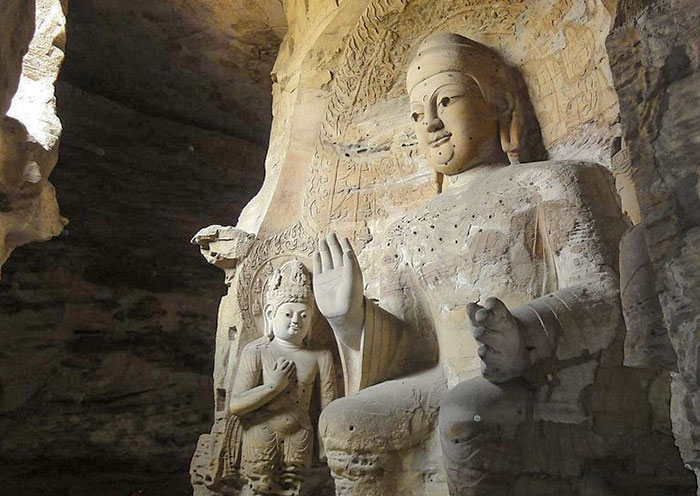
Cave 5 and 6:
Cave 5, also known as the "Great Buddha Cave," contains the tallest Buddha statue at Yungang, standing at an impressive 17 meters. It dominates almost two-thirds of the cave.
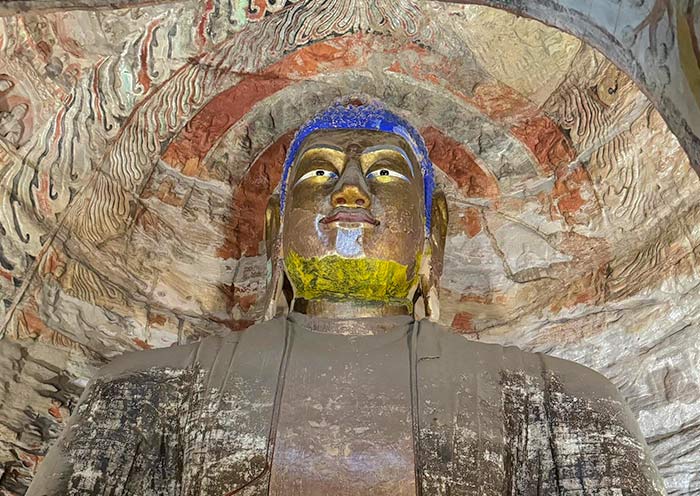
Cave 6, or the "Shakyamuni Buddha Cave," is considered the pinnacle of Yungang art and is often referred to as the most beautiful cave. Dedicated by an emperor to his grandmother, it features 33 relief sculptures that narrate the life of Shakyamuni Buddha, making it one of the earliest examples of religious comics in Chinese cave art.
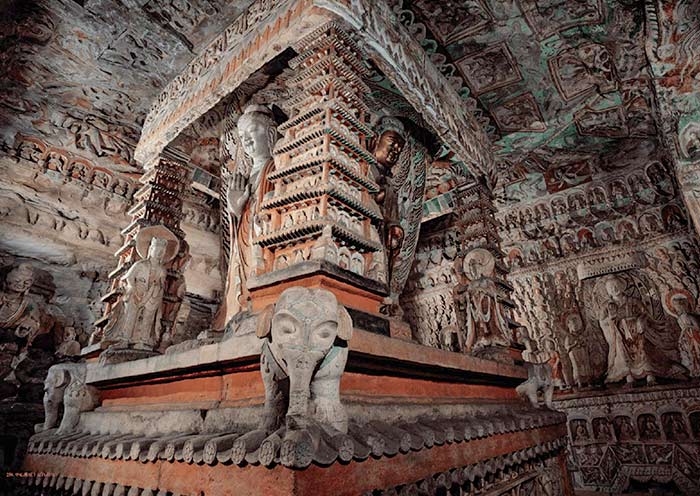
Cave 7: Cave 7 is renowned for its captivating group of "Six Beauties" bodhisattvas, depicted as ethereal, feminine figures
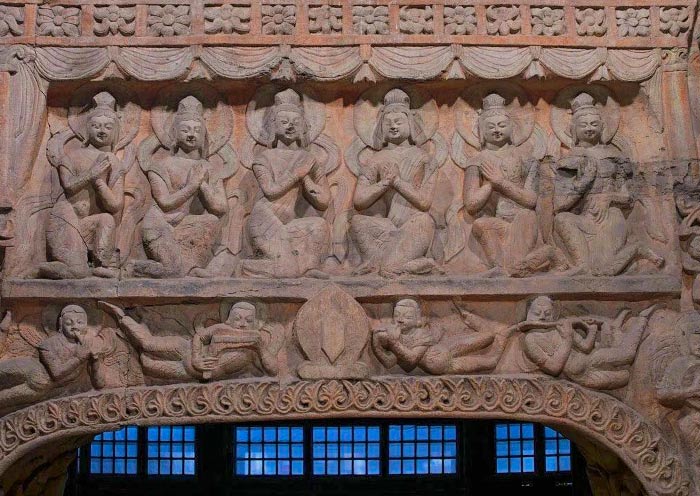
Cave 9: Cave 9 features a unique cave entrance that mimics the architecture of a traditional Chinese palace, making it the most aesthetically pleasing cave roof at Yungang. The interior walls are adorned with niches, musicians, dancers, and intricate carvings of Buddhas, flying celestial beings, flowers, and insects.
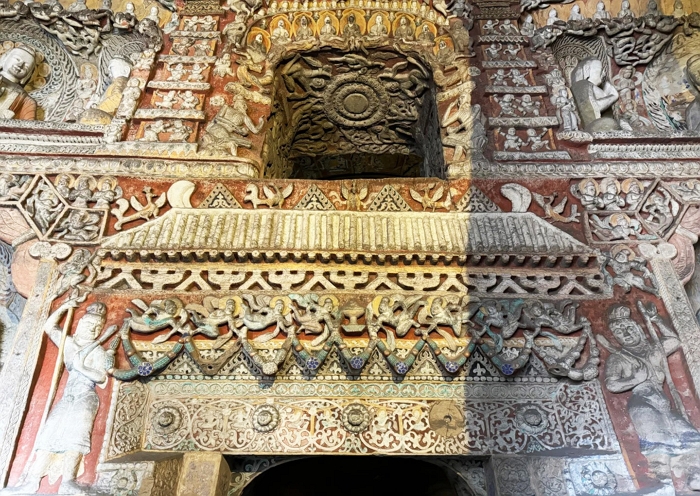
Cave 12: Cave 12 is a must-visit for music lovers. The cave is filled with sculptures depicting a Northern Wei court orchestra and ancient dancers. The musicians are shown playing various instruments such as the pipa, zheng, panpipe, transverse flute, the five-stringed kuyu from Kucha, and the vertical harp from Persia. These statues are either jumping, sitting cross-legged, or standing.
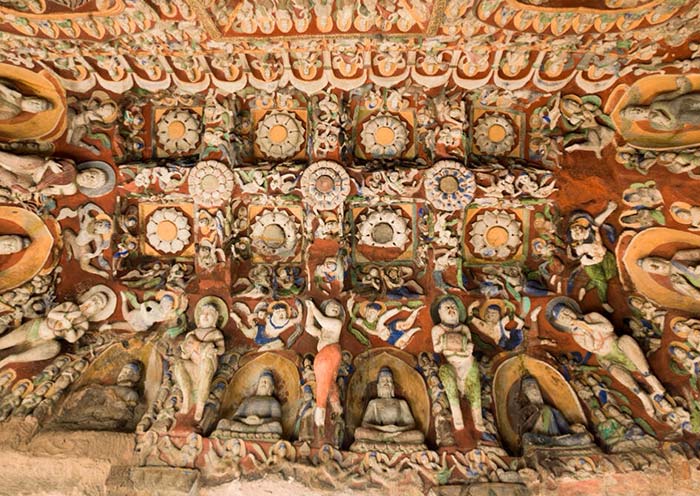
Cave 15: Cave 15, aptly named the "Thousand Buddha Cave," contains over 10,000 orderly arranged statues, making it a unique feature within the Yungang Grottoes.
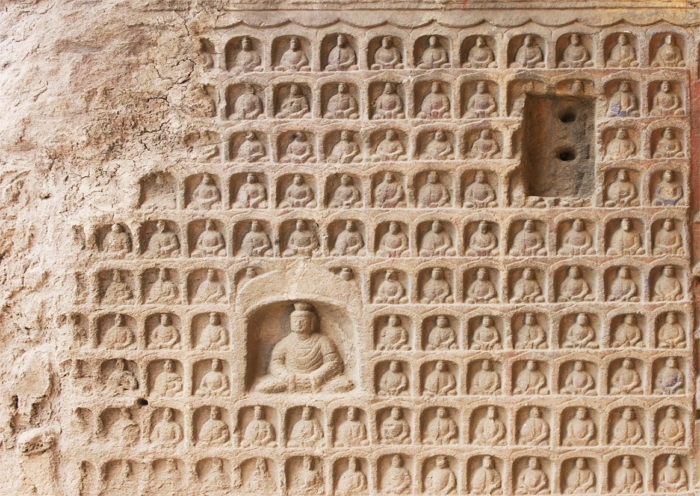
Cave 20: Cave 20 is one of the most iconic caves at Yungang, often featured in promotional materials. Due to a collapsed rock face, the main Buddha statue is exposed to the elements, hence its name, "Open-Air Buddha."
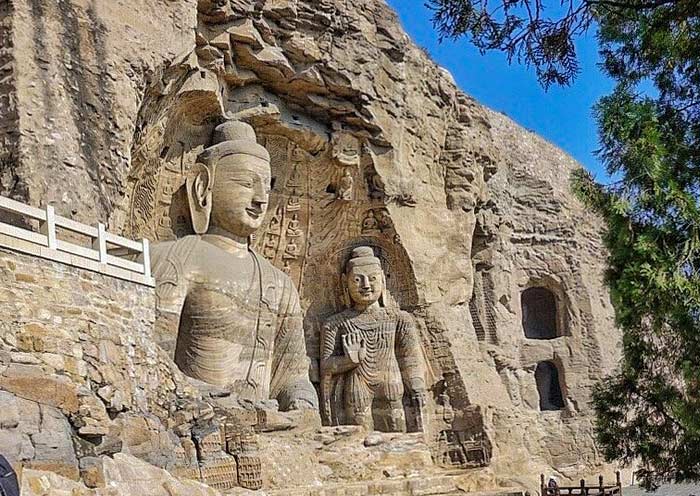
The builders of these magnificent works cherished the aspiration that their sculptures would be as timeless as the mountains. However, the passage of time serves as a poignant reminder that nothing in the material world can truly escape its grasp.
Unveiling the Mysteries of Small Holes in Yungang Caves
While exploring the grottoes, you'll notice numerous small holes. Natural causes like weathering can't explain these regular patterns. In fact, during the Qing Dynasty, the government organized several restoration projects for the Yungang Grottoes. Craftsmen drilled holes into the Buddha statues, inserted wooden wedges, and wrapped them with hemp ropes. Finally, they covered the holes with soil and painted them. Over time, the soil on the holes fell off, and the wooden wedges rotted away, leaving behind these small holes.
Modern restoration projects are also common. As you tour the Yungang Grottoes, you may find some caves covered in green gauze with scaffolding inside for Buddha statue restoration. The Shanxi government occasionally carries out restoration work. When I visited, the restoration had been completed. I hope you're lucky enough to experience the same.
How to Visit Yungang Grottoes
The Yungang Grottoes scenic area is primarily divided into two sections: the cave group and the landscape area. The landscape area is mainly composed of commemorative statues and ancient-style buildings. After passing through the landscape area, visitors will reach the main attraction: the cave group.
Route: Tanyao Square (昙曜广场) - Worship Buddha Avenue (礼佛大道) - Worship Buddha Relief Wall (礼佛浮雕墙) - Lingyan Temple (灵岩寺) - Yungang Cave Group (云冈石窟群)- Food Street (食货街)
Upon entering the park, visitors will arrive at Tanyao Square (昙曜广场), where a statue of Tanyao, the mastermind behind Caves 16-20, stands at the center. After the square, visitors will encounter the grand Worship Buddha Avenue (礼佛大道), lined with 13 pairs of Thousand Buddha Pillars. Each pillar is supported by an elephant base and adorned with smaller Buddha statues.
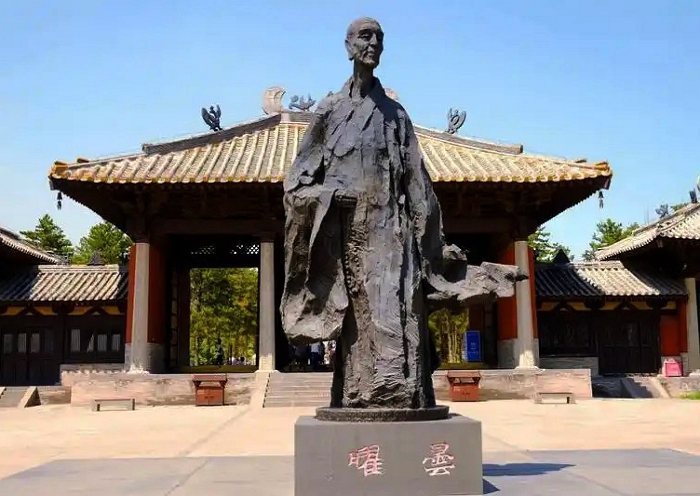
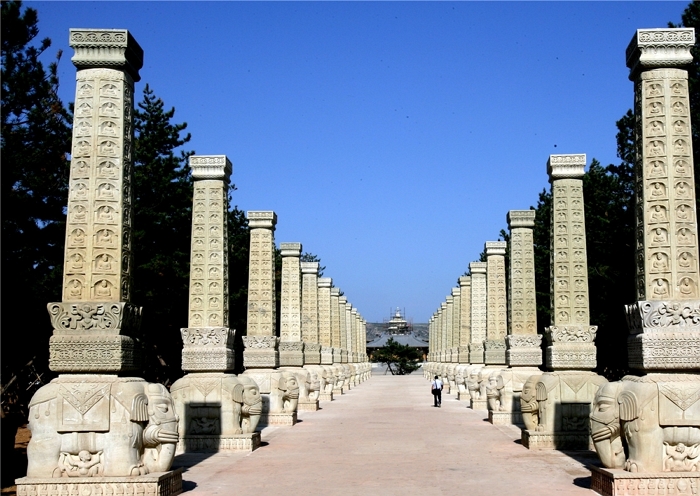
Further along, visitors will pass by the Worship Buddha Relief Wall (礼佛浮雕墙) and a wishing tree adorned with red ribbons. Next, they can quickly pass through the ancient-style Lingyan Temple (灵岩寺). After crossing the stone bridge, visitors will finally reach the main attraction, the Yungang Cave group (云冈石窟群). It is recommended to visit the caves from east to west. Finally, visitors can enjoy local delicacies at the Food Street (食货街).

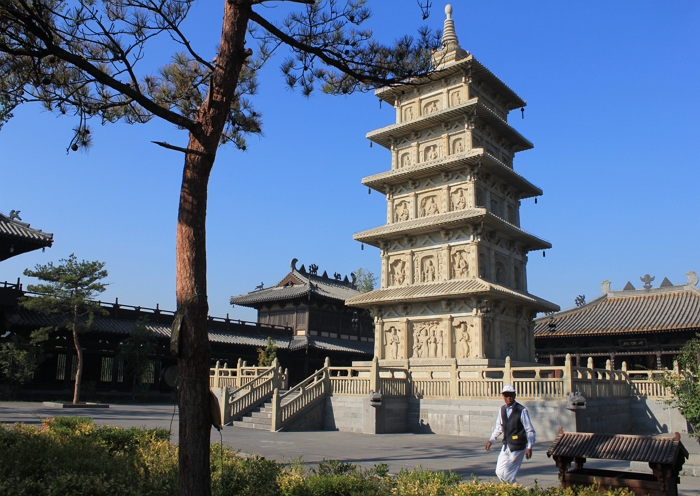
How to Get to Yungang Caves
The Yungang Grottoes are situated in Datong City, Shanxi Province. This means that to witness these ancient caves, tourists must first journey to Datong. And the fastest route to Datong is from Beijing, the closest major city. Below, we outline the transportation options from Beijing to Datong and then to the Yungang Grottoes.
Step 1. Get to Datong from Beijing
By Flight
Enjoy a swift and comfortable journey from Beijing to Datong by air. Flights from Beijing Capital International Airport or Beijing Daxing International Airport take approximately 1 hour and 15 minutes. While the airfare ranges from 400 to 800 yuan, the convenience and time saved often make it a worthwhile investment. A taxi ride of around 40 minutes and 100 yuan will bring you to the Yungang Grottoes.
By High Speed Train
For budget-conscious travelers, high-speed trains offer an affordable and scenic option. Multiple trains depart daily from Beijing Station and Beijing North Station, arriving at Datong South Station in 1.5 to 2 hours. With ticket prices starting from 170 yuan, this is a cost-effective way to reach the Yungang Grottoes.
Step 2. Get to Yungang Grottoes from Datong
From Railway Station to Yungang Grottoes:
- Getting to the Yungang Grottoes from Datong South Railway Station is a breeze. The journey is approximately 24.4 kilometers long, and multiple tourist lines are available daily, starting as early as 9:30 AM. The station, conveniently located at the intersection of Wenying South Road and Nanhuan East Road in Pingcheng District, offers direct access to the grottoes. Expect a travel time of around 1-1.5 hours for a 10 yuan fare.
From Airport to Buddhist Grottoes China:
- Datong Yungang International Airport is located 37 kilometers from the Yungang Grottoes. It is situated north of Nanhuan East Road, Beijiazao Town, in Yunzhou District of Datong City, Shanxi Province. Take bus 605 to Datong South Railway Station, then transfer to another bus for the Yungang Grottoes. The entire trip takes about 2 hours and 10 minutes, costing 13 yuan.
Take Private Car to Yungang Caves China:
- Want to get to Yungang Buddhist Grottoes China faster and more comfortably? Consider a private car service. Whether you're starting from anywhere of Datong, a private car can be at your service whenever you're ready. Enjoy a less than 40 mins ride from Datong. This convenient service is provided by Asia Odyssey Travel - we offer all-inclusive private car transfer to Yungang Caves China with English-speaking guide.
Best Time to Visit Yungang Caves & Datong Weather
The most enjoyable time to explore the Yungang Grottoes is during the shoulder seasons of spring (April-June) and autumn (September-October). With mild temperatures, minimal rainfall, and clear skies, these months offer ideal conditions for sightseeing. The average minimum temperature during this period is above 15 degrees Celsius, making a light jacket a practical choice.
For the best photo opportunities of your Shanxi trip, it is recommended to visit the grottoes around 3 PM when the natural light enhances the intricate details of the carvings.
Where to Stay in Datong (Nearby Yungang Caves)
When it comes to accommodations near the Yungang Grottoes, you have several options. Hotels within the scenic area offer the most convenient access but come with a higher price tag, starting from 300 yuan per night. For a more budget-friendly option, consider chain hotels located within a 10-kilometer radius, starting from 200 yuan per night. If you prefer the vibrant atmosphere of the city center, hotels in the western part of the ancient street or near the newspaper office on Yucai North Road offer rates starting from 150 yuan per night.
Plan A Yungang Caves Tour with Asia Odyssey Travel
Two or three days is an ideal amount of time to experience the rich history and culture of Datong. Begin your journey at the magnificent Yungang Grottoes, a UNESCO World Heritage Site. Afterward, delve deeper into the city's cultural heritage by visiting the intricate Nine Dragon Wall and the historic Huayan Temple.
For those seeking a more immersive experience, a six-day tour of Shanxi province is highly recommended. Start your adventure in Datong, exploring the iconic Yungang Grottoes. Continue your journey to Mount Wutai, a sacred Buddhist mountain, for a spiritual retreat. Then, immerse yourself in the ancient charm of Pingyao, a UNESCO World Heritage Site renowned for its well-preserved Ming and Qing Dynasty architecture. For a more comprehensive experience, extend your trip to visit the nearby Zhangbi Ancient Fortress and the opulent Wang Family Compound.
Highly Recommended 6 Days Shanxi Tour:
Day 1: Datong Yungang Grottoes – Nine Dragon Screen Wall – Huayan Temple
Day 2: Hanging Temple – Yingxian Wooden Pagoda
Day 3: Mount Wutai
Day 4: Mount Wutai – Taiyuan
Day 5: Taiyuan – Pingyao Ancient City
Day 6: Zhangbi Ancient Castle – Wang’s Family Compound
